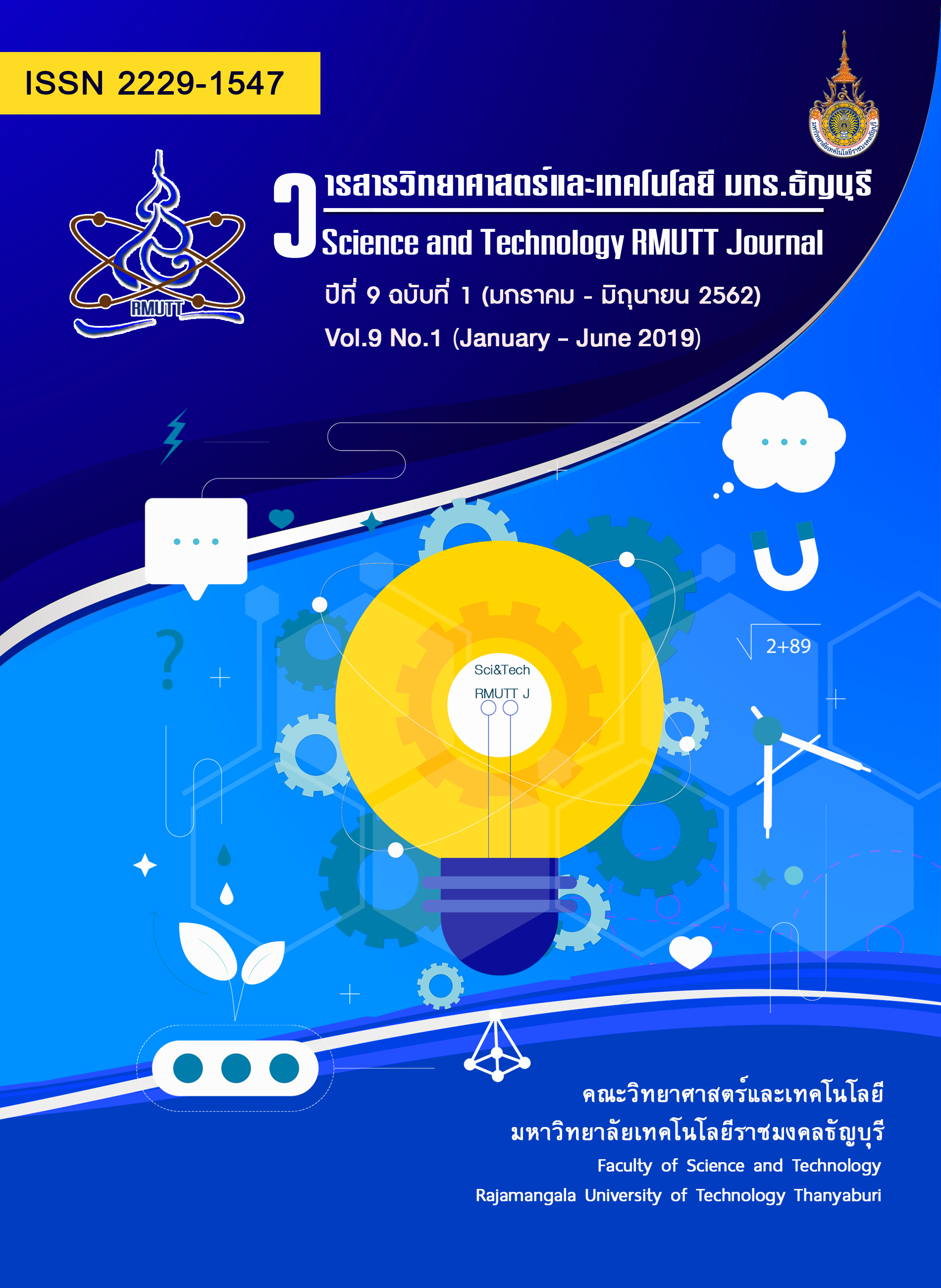Lead removal from waste water with Polygonum odoratum Lour. leaves adsorbent
Main Article Content
Abstract
This research aim to study lead removal from synthetic waste water using Polygonum odoratum Lour leaves adsorbent that is Thai traditional vegetable and easy to discover in local area. The parameters that effect on lead adsorption including initial pH solution, initial lead concentration in synthetic waste water, weight of adsorbent and adsorption time was investigated. From the results, the condition that was maximum value of Pb removal from synthetic waste water was 1100 milligram per liter of Pb in synthetic wastewater, initial pH of solution at 5, 0.05 gram of adsorbent, adsorption time of 30 minutes. The Pb removal efficiency with Polygonum odoratum Lour leaves adsorbent was 107 milligram per gram of adsorbent. The results shown the high value of metal removal efficiency indicated that Polygonum odoratum Lour leaves adsorbent can be used as new adsorbent for Pb removal from waste water. Additionally, the functional group of adsorbent were detected by FT-IR spectrometer. The FT-IR spectra of adsorbents (before and after metal adsorption) were different in hydroxyl group that was major chemical functional group of Polygonum odoratum Lour leaves. This result can be explain to the position of binding site between metal and adsorbent.
Article Details
References
D. Sud, G. Mahajan and M. P. Kaur, Bioresource Technology 2008, 99, 6017-6027.
M. A. Barakat, Arabian Journal of Chemistry 2011, 4, 361-377.
A. Demirbas, Journal of Hazardous Materials 2008, 157, 220-229.
R. Ayyappan, A. C. Sophia, K. Swaminathan and S. Sandhya, Process Biochemistry 2005, 40, 1293-1299.
KevinKelly-Vargas, MonicaCerro-Lopez, SilviaReyna-Tellez, E. R.Bandala and J. LuisSanchez-Salas, Physics and chemistry of the earth 2012, 37-39, 26-29.
A. P. Lim and A. Z. Aris, Reviews in Environmental Science and Bio-Technology 2014, 13, 163-181.
ปารมี สงขัย และ วรางคณา สมพงษ์, วารสารวิทยาศาสตร์และเทคโนโลยี 2560, 25, 86-100.
M. Özacara, AyhanŞengilb and HarunTürkmenler, Chemical Engineering Journal 2008, 143, 32-42.
Y. Wang, F. Wang, T. Wan, S. Cheng, G. Xu, R. Cao and M. Gao, Journal of Wuhan University of Technology-Mater. Sci. Ed. 2013, 28, 650-657.
S. B. Mahmoud, H. Saad, B. Charrier, A. Pizzi, K.Rode, N. Ayed and F. C.-E. Bouhtoury, Wood Sci Technol 2015, 49, 205–221.






